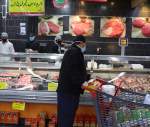You are here
Jordan and the region
Nov 24,2014 - Last updated at Nov 24,2014
Jordan had its golden era when the oil boom started in the mid-1970s, when its economy grew at an average of 16 per cent in real terms, between 1976 and 1980.
Interestingly, in 1976, the unemployment rate in Jordan was 1.6 per cent; it grew ever since and is now structurally hinged at about 12 per cent.
Jordan’s dependence on the Gulf for aid and employment for its educated workforce is beyond dispute.
When the oil glut started in 1981, the growth rate in Jordan dropped from 19 per cent to 4.7 per cent in one year. The economy was so interlinked with the oil economies of the Gulf in terms of aid and Jordanian brain drain that growth would average 5.2 per cent for the next five years and fall within some years to less than 2 per cent.
As the oil glut continued so did the suffering of the Jordanian economy; its growth in the next five years was to average -0.88 per cent.
The economy had a major setback, a near complete collapse in 1989 when the growth fell to -13.5 per cent, unemployment rose to 27 per cent, and prices doubled.
The debt to GDP ratio was 218 per cent; and the government, which had practically lost all aid from the Gulf, ran out of major and institutional lending sources, dipped into the foreign reserves to continue to spend on a bloated and growing bureaucracy.
The rescue came in 1991 with the repatriation of over 300,000 Jordanians from the Gulf. The returnees brought with them their savings and a surge in demand, and a highly skilled workforce — Jordan’s best and brightest were to return and seek employment in the homeland instead of the Gulf.
The economy boomed with a growth rate of 18.7 per cent in 1992, but the growth was to quickly fizzle as most money went into the construction sector.
By 1996, growth had gone down to 2 per cent. The second Intifada and a conservative government in Israel did not help matters either.
The euphoria and hope of an ever-lasting peace quickly vanished. Jordan was again exposed, and the region was not a benefactor for some change this time.
Jordan began receiving huge oil subsidies from the Iraqi regime in the 1990s, subsidies that abruptly ended with the Gulf War II in 2003, which brought the Iraqi regime to an end.
The impact of the loss of subsidy was felt only when the oil prices began to skyrocket. It was then that a new development in Jordan’s relationship with the region emerged.
Instead of being a beneficiary of oil price increases, Jordan was to suffer as the prices increased. Aid from the Gulf was never back to its levels of the 1970s and the impact of oil was to be felt in every sector.
Yet the region came to the rescue again. The second Iraq war brought with it a mass migration from Iraq and with the migrants came significant investments.
Jordan was to witness its second golden era. Real economic growth during 2004-2008 averaged over 8 per cent. The growth could have been sustained beyond 2010, but a strict monetary policy at the time curtailed lending to resident private sector to under 1 per cent.
The economy went, by our own doing, into the global credit crisis as the world was emerging from it.
Government policies later made Jordan dependent for 80 per cent of its energy generation on gas from Egypt. The supply suffered many stoppages as the gas pipeline was blown time and again — sixteen times, in fact.
Jordan, which had depended on Egypt’s gas, was to replace it with the more expensive diesel fuel.
The region came to the rescue again. While many, especially government pundits, believe that the economy was hurt by the influx of some 650,000 Syrian refugees and over 750,000 Syrian residents, the slight improvements in growth and even the decrease in unemployment were due to this “regional disaster”.
The influx of Syrians increased demand, supplied the labour force with the missing middle- and semi-skilled workers we always needed, and with some FDIs that unlike the previous inflows which had gone to real estate, went this time into the manufacturing sector — about 500 factories.
Many of the Syrian industrialists brought with them not only their factories but also their market access.
I see Jordan to almost continuously benefit from regional chaos. And when things go wrong, it is of our own doing.
I may belong to a minority, thinking this way, but Mark Twain said: “Whenever you find yourself on the side of the majority, it is time to pause and reflect.”











